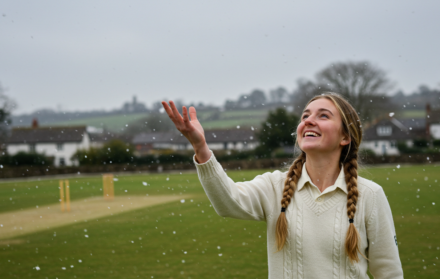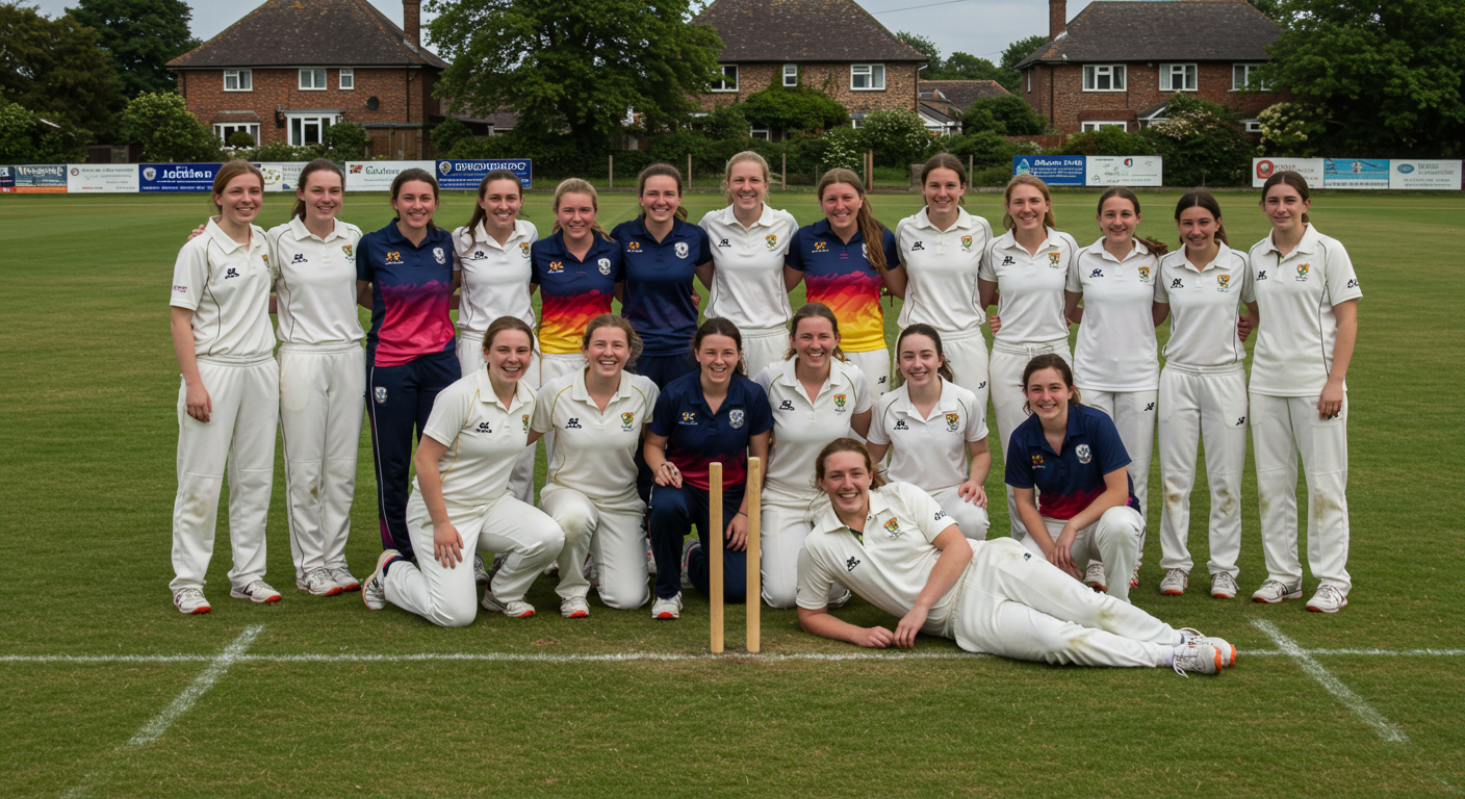
The Growing Role of Women in Village Cricket
For much of its long, winding history, village cricket has been seen as a mostly male pursuit. Clubhouses lined with sepia-toned photographs often tell a story of fathers, sons, and grandfathers, with precious little mention of daughters. But quietly, steadily, that’s changing. Across the UK, women are taking on far bigger roles in village cricket — not just as scorers or supporters, but as players, captains, coaches, and committee members too.
It hasn’t been a revolution with banners and headlines. Instead, it’s happening the village cricket way: gradually, practically, and usually over a cup of tea. You’ll find women padding up alongside men on Sunday afternoons, organising training sessions for juniors, running club finances, and stepping onto the committee without anyone batting an eyelid. At some clubs, they are the heartbeat keeping the place going.
It’s not about ticking diversity boxes or token gestures. It’s about recognising that village cricket, to survive and thrive, needs every willing hand, every good bat, and every keen eye on the field. The growing role of women in village cricket is not a side note anymore. It’s central to the game’s future, woven into every boundary scored, every pavilion swept, and every soggy match day spent sheltering under a gazebo.
1. More Women Are Playing in Mixed Village Teams

Across England and Wales, more village clubs are fielding genuinely mixed teams, where ability, not gender, is the only measure that matters. This change has been gradual, often happening without grand announcements or formal policies. A club short of players one Sunday gives a regular scorer or umpire a go with the bat — and realises they should have done so years earlier.
The level of formality varies. Some clubs have designated mixed sides; others simply pick from whoever’s available and keen. In many cases, teenage girls who grew up in the junior sections are now staying on into adulthood, slotting naturally into open-age sides alongside men. It’s a simple, practical solution to the very real problem of dwindling player numbers — but it’s also a refreshing reminder that cricket is a game for anyone who loves it.
Matches often look a little different now. You might see a medium-pacer steaming in from one end and a young woman calmly nudging the ball into gaps at the other. Post-match, discussions are less about who scored what and more about who brought the best homemade cake. It’s cricket, but wider, warmer, and somehow even more village-like than before.
The growing role of women in village cricket through regular playing opportunities has made clubs stronger, more inclusive, and better placed to survive in changing times. And importantly, it feels entirely natural — not a token effort, but a genuine evolution.
2. Women Are Leading Junior Coaching Programmes
One of the biggest shifts in village cricket over the past decade has happened off the pitch, in the world of junior coaching. Increasingly, it’s women who are stepping forward to run training sessions, organise junior matches, and manage the logistical headaches that come with shepherding thirty children armed with cricket bats.
Historically, coaching duties often fell to former players or the odd brave parent, but many clubs now find that mothers, older sisters, and former junior players are volunteering in large numbers. Women with Level 1 and Level 2 coaching badges are a common sight at Friday evening sessions, running drills, supervising quick cricket matches, and patiently explaining the mysteries of the front foot defensive to fidgety eight-year-olds.
This shift matters because junior cricket is the lifeblood of any village club. Without it, there’s no future. And when young girls see women leading coaching sessions with authority and enthusiasm, it sends a powerful message: cricket is for them too, not just something to watch from the sidelines.
The growing role of women in village cricket through coaching has quietly transformed clubs across the country. It’s not just about growing numbers — it’s about changing perceptions, making sure the next generation of players see a sport that welcomes them fully, from the first throw to the first innings.
3. Club Committees Are Becoming More Balanced
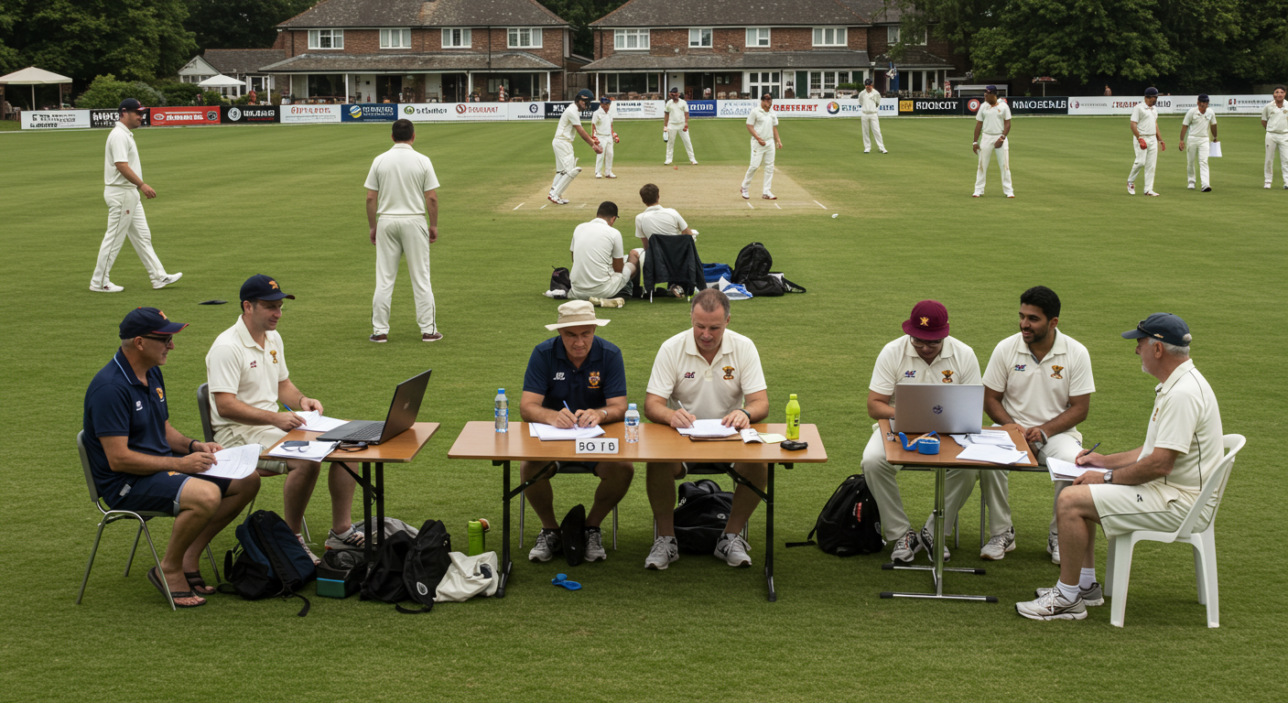
The old cliché of the club committee being made up of retired blokes arguing about who forgot to cut the outfield is, thankfully, starting to fade. More women are stepping into key roles off the field: treasurer, secretary, fixture secretary, welfare officer, and even chair.
This isn’t about ticking boxes or appearing modern. It’s practical. Clubs have realised that involving women at decision-making levels brings fresh perspectives, better organisation, and often, a more welcoming environment for everyone involved. Meetings tend to be less about holding onto old grudges and more about finding ways to keep the club thriving.
At some clubs, women have been the driving force behind new initiatives: building links with local schools, securing sponsorships, or launching women’s and girls’ teams from scratch. At others, they’ve taken on the crucial (and often thankless) roles of fundraising and safeguarding, without which no club can legally or safely operate.
It’s important to remember that many village clubs rely on a handful of tireless volunteers to survive. The growing role of women in village cricket at committee level has strengthened clubs, broadened horizons, and, crucially, helped create an environment where anyone — regardless of age, gender, or background — feels able to walk onto the green and be part of something bigger than themselves.
4. Women’s and Girls’ Teams Are Creating New Opportunities
A major reason why village cricket is becoming more vibrant is the rise of standalone women’s and girls’ teams. Where once young female players might have drifted away after junior cricket, today many clubs are actively creating clear pathways for them to continue playing into their teens and adulthood.
It’s not unusual now to see posters advertising women’s training nights alongside traditional men’s nets. Some clubs have set up softball leagues to attract beginners, while others have launched hardball women’s teams competing in local leagues. Importantly, the welcome is genuine. You don’t have to have played county age-group cricket to join — you just have to turn up with enthusiasm and maybe a pair of trainers.
The effect has been dramatic. Clubs that were struggling for volunteers now find new faces eager to get involved not just on the field but in club life more generally. Match days feel more inclusive, social events have broader appeal, and the overall health of the club improves.
And while some older traditionalists might have grumbled at first, it’s hard to argue when an extra 20 members pay their annual subscriptions, help at the fundraising quiz, and bring their families along to support matches. The growing role of women in village cricket through dedicated teams has created a stronger, more sustainable future for hundreds of clubs up and down the country — and crucially, it’s giving players of all backgrounds a genuine reason to stay involved for life.
5. Breaking Down Old Barriers with Small Changes
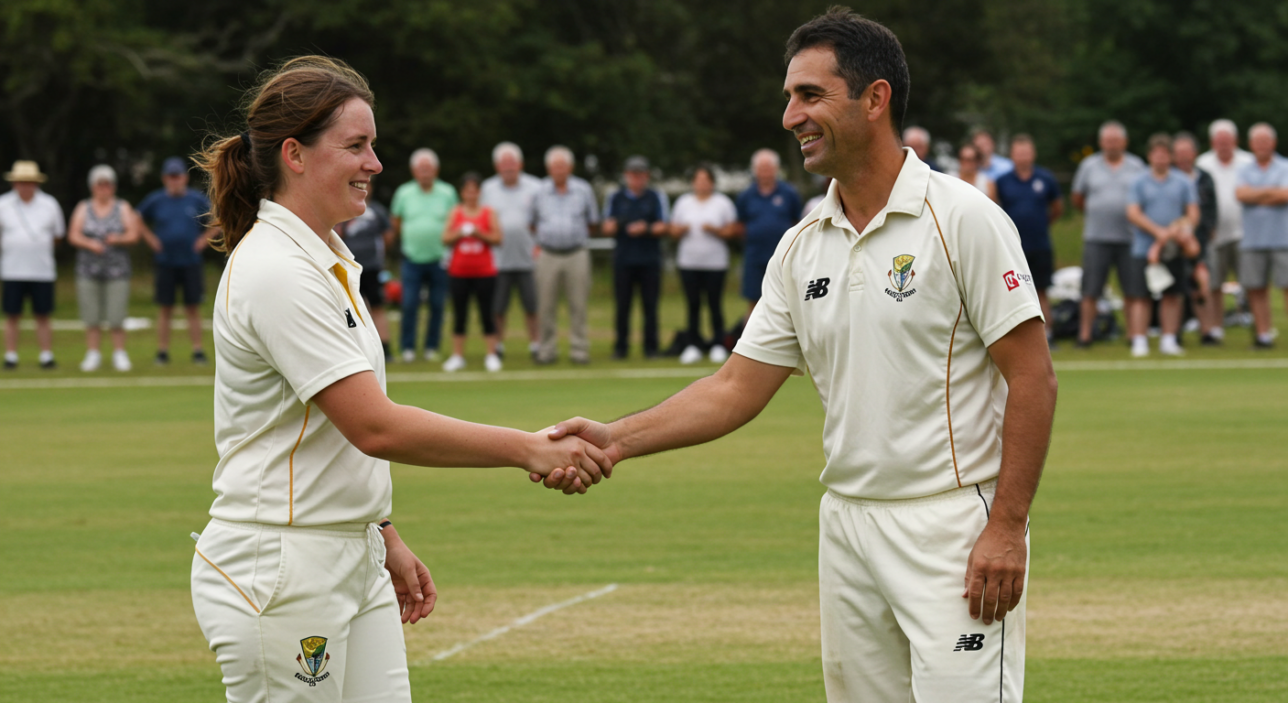
Sometimes, it’s not the big structural shifts that make the biggest difference. It’s the small, quiet changes that tell everyone they truly belong. For a long time, many village clubs were unintentionally unwelcoming to women — not through active exclusion, but simply by habit. Changing rooms without proper facilities, kit sizes that didn’t fit, language that assumed players would always be male — all these small things built invisible walls.
In the last few years, many clubs have started quietly breaking those barriers down. Separate changing spaces are being added, or at least a lockable area within existing facilities. Kit suppliers are offering women’s sizes. Club websites and posters show female players as well as male. Even something as simple as making sure everyone’s tea requirements — gluten-free, vegetarian, or otherwise — are respected creates a more open and welcoming culture.
None of these shifts grab headlines, but together, they change everything. They send a message: you are genuinely part of this, not an afterthought. It’s one thing to invite women to play; it’s another to make sure the club is ready for them to stay.
The growing role of women in village cricket has been helped enormously by these thoughtful, practical adjustments. By removing small but persistent barriers, clubs have opened the door wider for future generations — not with grand statements, but with real, lasting changes that genuinely make village cricket feel like it belongs to everyone.
6. Role Models Are Inspiring the Next Generation
One of the quiet revolutions in village cricket has been the rise of visible female role models. Not just international stars like Heather Knight and Nat Sciver-Brunt, but local heroes — the woman who opens the batting for the Sunday XI, the teenage spinner who coaches the under-11s, the club secretary who knows every fixture date by heart.
Having women in all parts of the club makes a real difference to how young girls, and even boys, see the game. When children grow up seeing women playing, umpiring, coaching, and leading, it subtly reshapes what they believe is possible. Cricket isn’t just a game for dads and brothers anymore — it’s for mums, sisters, teachers, and neighbours too.
Plenty of clubs have stories of young girls who started coming along to junior sessions only because they saw a female coach or player they could look up to. These players don’t have to be international stars. Often, the most powerful role models are the ones kids can actually talk to after a session, ask for batting tips, or simply watch laughing with teammates after a close match.
The growing role of women in village cricket through simple visibility is helping clubs to future-proof themselves. It creates a culture where no one thinks twice about a woman taking the new ball or captaining the side — it’s just cricket, and that’s exactly how it should be.
7. Women Are Driving Off-Field Success Too

The cricket may grab the headlines, but a huge amount of a club’s survival happens off the pitch — fundraising, sponsorship, events, and community ties. Increasingly, women are leading these efforts with creativity, persistence, and a fresh approach that many clubs badly needed.
Charity matches, fun days, quiz nights, sponsored walks — a lot of these club-saving events are now spearheaded by women who understand that running a village cricket club means thinking beyond just the fixture list. It’s about keeping the wider village involved, whether they know their silly mid-off from their silly point or not.
Sponsorship deals, once reliant on a handshake at the local pub, are now being negotiated properly. Clubs are building proper community partnerships with schools, local businesses, and parish councils — often through the professional skills that women bring from their day jobs into their voluntary work at the club.
It’s easy to underestimate how vital this work is. Without steady fundraising and wider community support, many clubs would simply fold, no matter how good the batting lineup looks. The growing role of women in village cricket through off-field leadership has secured the future of countless clubs quietly and effectively.
When you see a refurbished pavilion, a set of brand-new training nets, or a thriving junior section with all the equipment it needs, chances are there’s a group of hardworking women behind it — getting things done, keeping the lights on, and proving that village cricket is about far more than what happens between the wickets.
Conclusion: The Growing Role of Women in Village Cricket
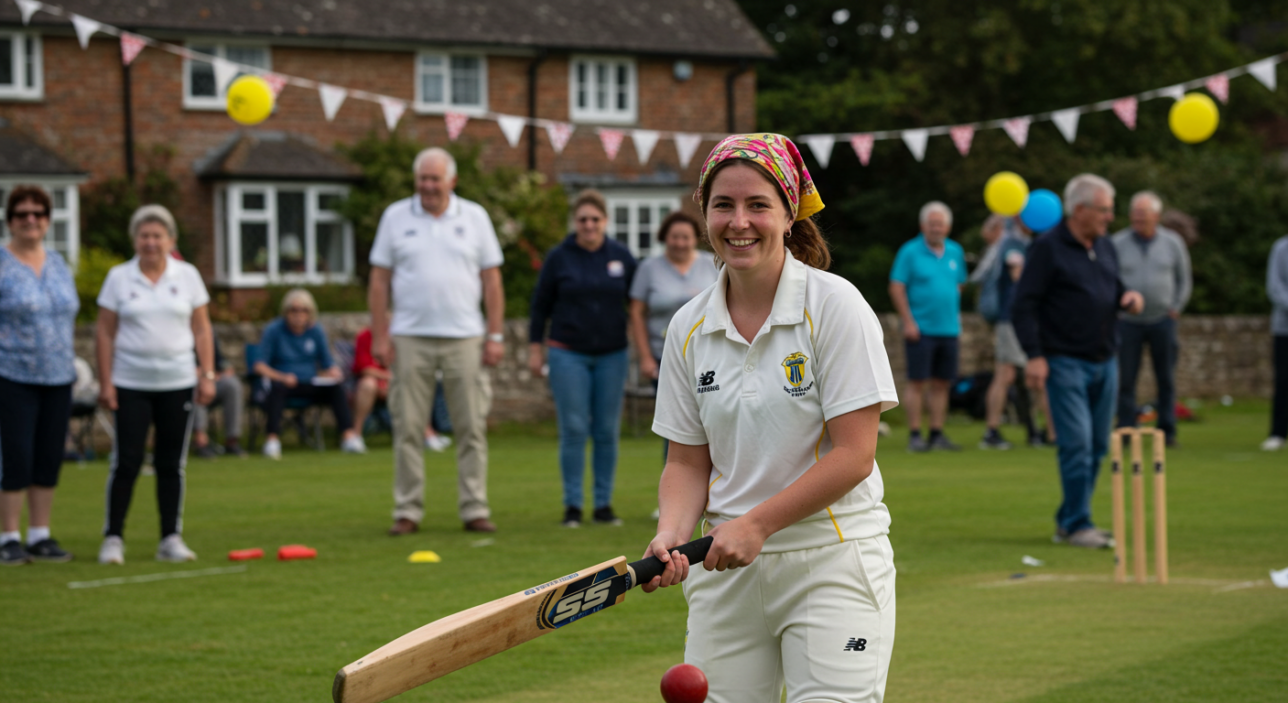
Village cricket has always thrived on community, on bringing people together across generations for a shared love of the game. In the past, that community often left women standing on the sidelines. Today, that picture is changing — not through fanfare or forced policies, but through real, steady progress that feels natural and long overdue.
The growing role of women in village cricket has touched every corner of club life. More women are padding up for Sunday matches, coaching the next generation of players, running club committees, and stepping in to make the thousand small things happen that keep a club alive. They are building teams, opening doors, and challenging old habits simply by being there, week after week, rain or shine.
It’s not perfect yet. There’s still work to do. Facilities can be better, attitudes can evolve further, and opportunities can widen. But the direction of travel is clear. Women are not just welcome in village cricket — they are essential to its future.
Look around the boundary ropes next summer. You’ll see young girls watching, teenage bowlers warming up, mothers scoring matches, and women leading the way with bat, ball, and clipboard. Village cricket isn’t losing its traditions — it’s strengthening them, one player at a time.




